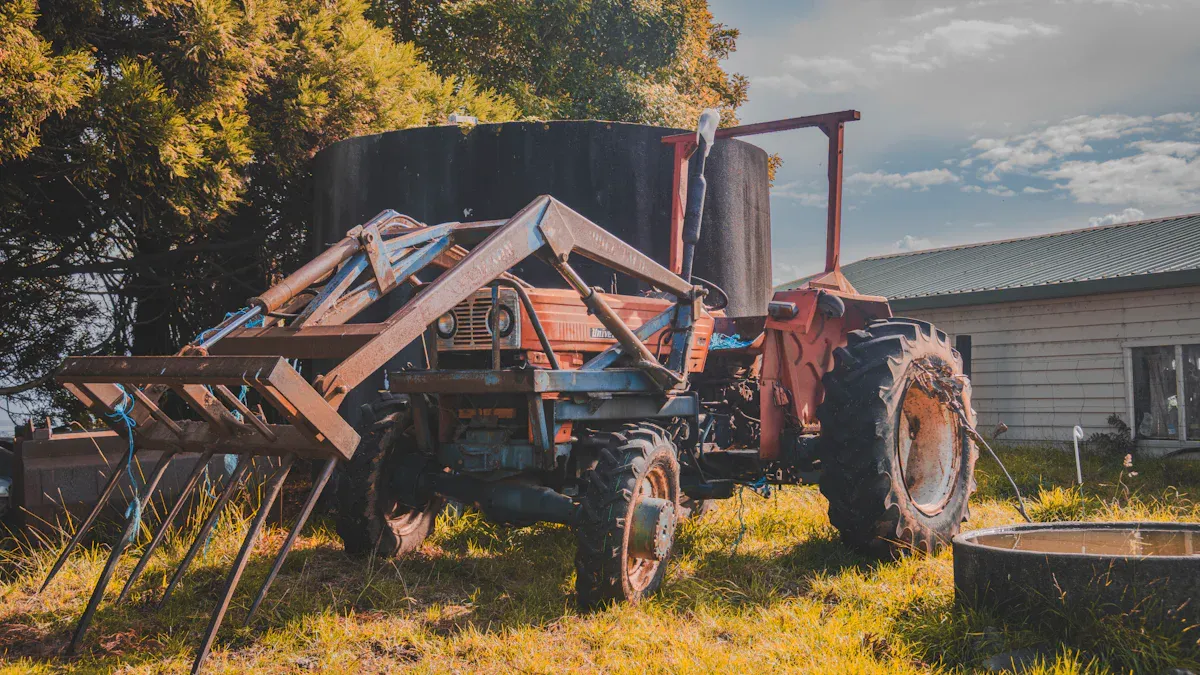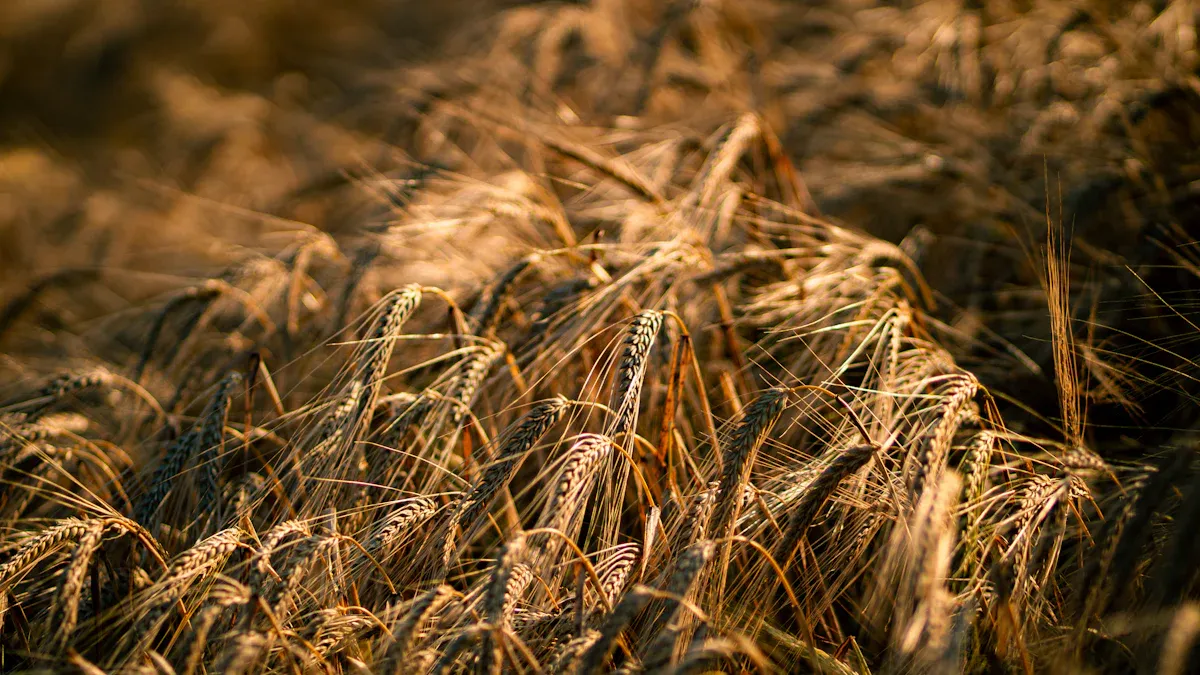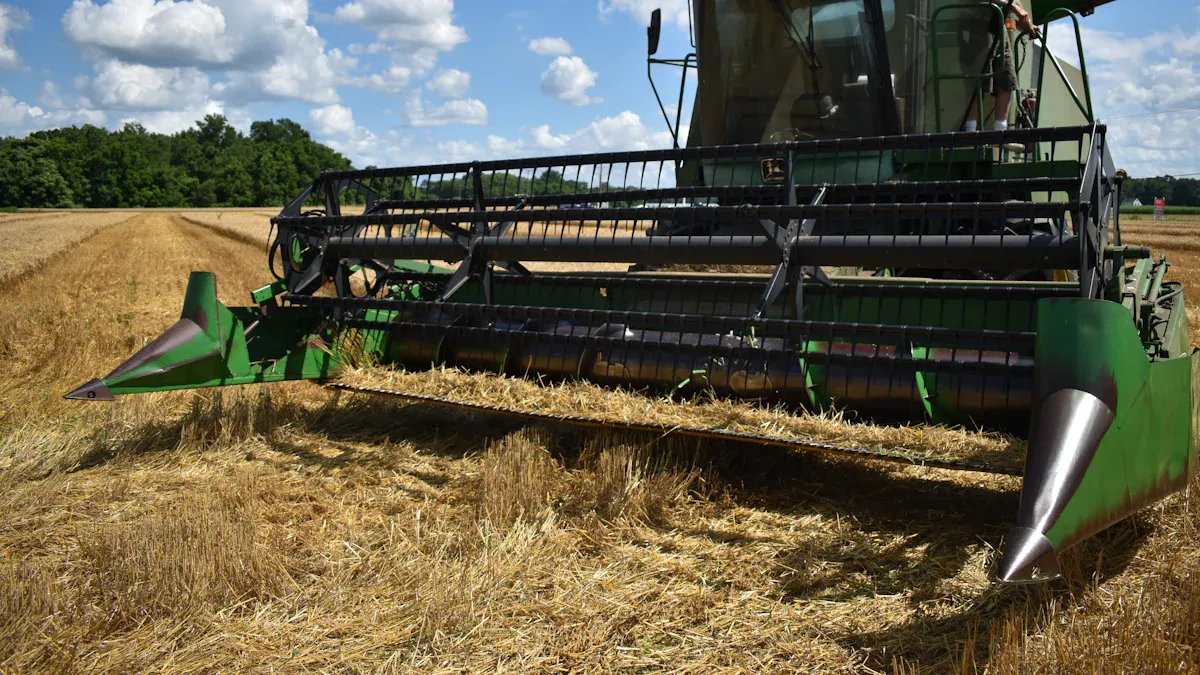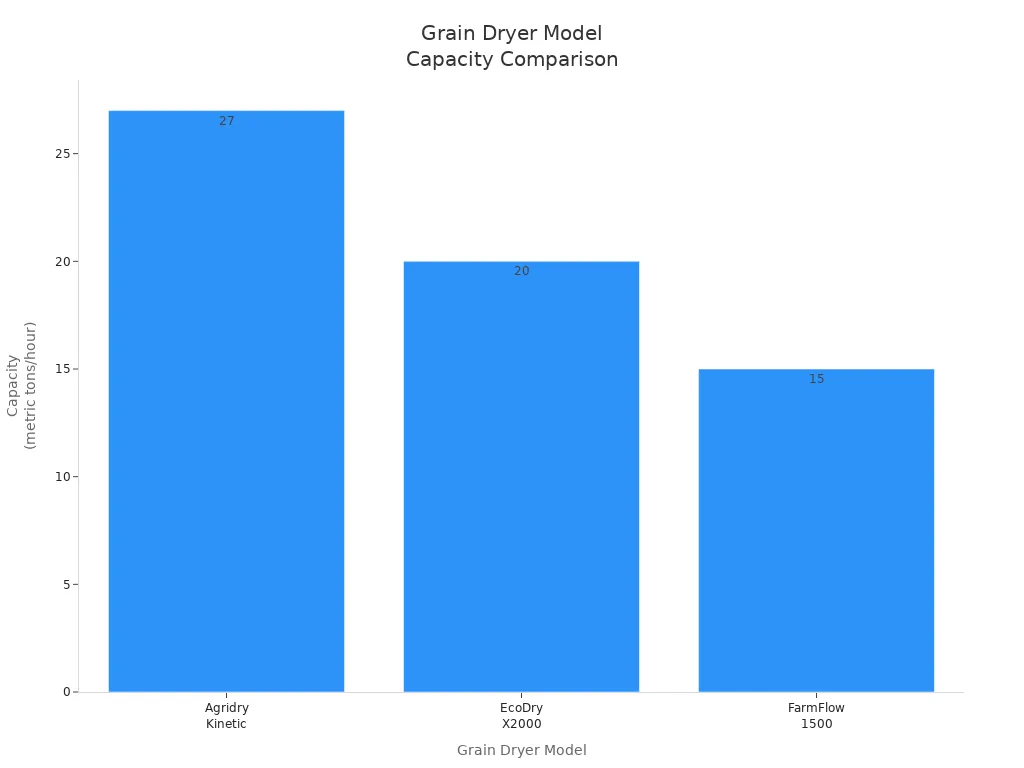English 

T: +86-18367823571
E: lyy@xg1688.cn
E: lyy@xg1688.cn
Building 2, No. 84, Qingxi Dongfeng Road, Qingxi Town, Dongguan City, Guangdong Province, 523642, China



Views: 0 Author: Site Editor Publish Time: 2025-07-18 Origin: Site











Imagine harvest time comes and a storm is coming soon. You must dry your grain fast to keep it safe and valuable. The best grain dryer depends on your farm’s size, crop, drying needs, and budget. Picking the right system helps you stop losses from bad drying, like wet damage or bugs. Studies show better drying can cut maize losses to 3.5% in Zambia and 4.5% in Zimbabwe. Automated grain dryers also cut labor costs and use less energy, which helps your farm make more money. As you read, think about what your farm needs most.
Pick a grain dryer that matches your farm size and crop. Make sure it meets your drying needs. This helps protect your harvest and can help you earn more money.
New grain dryers use less energy and need less work. They keep grain quality good by watching temperature and moisture closely.
Batch dryers are good for small farms and for checking quality. Continuous flow dryers are better for big farms that need fast drying.
Always watch grain moisture and temperature when drying. This stops damage, mold, and bugs from hurting your grain.
Ask experts for help and use checklists. This helps you find a safe and easy-to-use dryer. Pick one that can grow with your farm and is easy to take care of.

Picking the right grain dryer helps protect your harvest and money. Drying grain the right way keeps it safe from getting ruined. If you use the wrong method, you might lose both quality and profit.
High heat can ruin vitamins like vitamin C and B vitamins. This makes your grain less healthy.
Protein in grain can change if it gets too hot. This lowers its quality and makes it harder to digest.
If you do not dry grain right, it can crack, split, or change color. These problems make it less attractive to buyers.
Drying at the wrong temperature can cause bad taste and color. Customers may not want to buy your grain.
Good drying stops mold, bacteria, and pests. This keeps your grain safe to eat and helps it last longer.
If you do not dry and store grain well, you can lose up to 30% of its value. Not drying grain right means you lose weight and quality while storing it. If grain has more than 14% moisture, mold, mycotoxins, and bugs can hurt it. Drying too much or using too much heat can make grain break easily. This lowers how much you can sell it for.
Tip: Check moisture and temperature often while drying to keep your grain safe and valuable.
A modern grain dryer saves you money and energy. The right dryer dries grain faster and more evenly. This means less spoilage and lower costs.
Drying grain the right way lowers moisture to safe levels. This stops mold and bugs from ruining your harvest. With good air flow and temperature control, you can store grain up to four times longer. This means you lose less grain and keep more of what you grow.
Modern dryers use less energy than old ones. For example, dryers with indirect heaters use less fuel and make less pollution. You spend less on fuel and electricity, so you make more money. Here is a quick look at how modern dryers compare to old ones:
| Aspect | Benefit |
|---|---|
| Energy Efficiency | Uses less electricity and fuel, lowering energy bills |
| Cost Reduction | Advanced heat recovery systems save money for small farms |
| Grain Quality Preservation | Controlled drying keeps more nutrients in your grain |
| Suitability for Small Scale | Works well for small batches, saving energy and costs |
You also get faster drying and cleaner fuel choices, like propane. This means less pollution and lower costs over time.

Picking the best way to dry grain is important. There are different types of grain dryers. Each type has special features and works best in certain situations.
Batch dryers are good for small or medium farms. You put in a set amount of grain. Then you dry it and take it out before starting again. This way, you can control how the grain dries. It helps keep the grain in good shape. The 5H Series Grain Dryer uses new batch technology. It saves energy and is gentle on the grain. This means less grain breaks and better quality.
Continuous flow dryers are better for big farms with lots of grain. The grain moves through the dryer without stopping. These dryers can handle a lot of grain at once. They dry grain evenly and use smart controls. You can dry many kinds of crops with them. They also work well with high-tech farm tools. Here is a simple table to compare them:
| Feature | Continuous Flow Dryers | Batch Dryers |
|---|---|---|
| Capacity | High (50-100+ tons/hour) | Moderate (10-30 tons/hour) |
| Drying Uniformity | Excellent | Good |
| Energy Efficiency | High | Moderate |
| Labor Requirements | Low | Moderate to High |
| Crop Range | Wide | Limited |
Tip: Use batch dryers for smaller amounts and when you care about grain quality. Pick continuous flow dryers for fast drying and big harvests.
In-bin dryers let you dry and store grain in one place. You fill the bin, dry the grain, and keep it there. This saves work and energy. It is a good choice for small or medium farms. Portable dryers cost less to set up. You can move them from field to field. They are best for small farms or when you need extra drying help.
| Dryer Type | Installation Cost | Flexibility | Best For |
|---|---|---|---|
| In-Bin | Higher | Fixed | Small/medium farms |
| Portable | Lower | Mobile | Small farms, extra loads |
Mixed flow dryers use soft air and lower heat. They help keep grain safe and save up to 30% on energy. You can make these dryers bigger as your farm grows. Tower dryers dry grain quickly and fit in small spaces. They use smart controls for even drying. They are best for big farms with lots of grain.
Note: Mixed flow dryers are good for special grain and crops. Tower dryers are great for drying lots of grain in big farm businesses.
Start by looking at how big your farm is and what crops you grow. Small farms need different dryers than big farms. Think about how much grain you pick each day. Also, think about the types of crops you have. Corn, wheat, and canola all dry in different ways. Corn dries faster than wheat because air moves through it better. Some crops, like oilseeds, need gentle drying with low heat so they do not get hurt.
Figure out how much grain you need to dry each hour. This depends on your harvest size and how much water you need to take out.
Pick a dryer that fits your farm size. Portable dryers are good for small farms. Big, fixed dryers work better for large farms.
Do not buy a dryer that is too big. Large dryers waste energy and cost more money.
Use special dryers for seeds or crops that need low heat.
Choose batch or continuous flow dryers based on your farm size and how fast you need to dry grain.
Tip: Always check your grain’s moisture before and after drying. This helps you dry it right and keep it safe to store.
Pick a grain dryer that can handle your busiest days. The amount you harvest in one day tells you the smallest dryer you need. If you pick a lot in one day, your dryer must keep up. Experts say to get a dryer with 15-20% more space than your biggest harvest day. This extra space helps you if the weather is bad or you need to dry more.
To find the right size, divide your biggest daily harvest by your drying hours (usually 20). Then multiply by 1.2 for safety. Different crops dry at different speeds. Corn dries faster than wheat or canola. Here is a table to help you see the differences:
| Crop Type | Throughput Rate (bushels/hr) | Moisture Removal Points | Drying Time per Point (minutes) | Notes |
|---|---|---|---|---|
| Corn | ~625 | 4 | 6 | Faster drying due to airflow |
| Wheat | 200 - 450 | 4.5 | 13 | Slower, needs cooling |
| Canola | Significantly slower | ~3 | N/A | Tough to dry, needs care |
Note: Dryer makers often say their dryers are faster than they really are. Loading and cooling can slow things down.
Saving energy and being safe are important for your farm and the planet. Grain dryers use hot air and electricity to dry grain. Natural air drying costs less but takes longer. Heated air drying is faster but uses more energy. Big dryers dry grain quickly but cost more to run. Some dryers save energy by using heat again or moving air in a circle.
Safety is also very important. New dryers have features to stop accidents and keep workers safe. Look for:
Temperature controls to stop grain from getting too hot.
Moisture sensors to make sure grain is dry enough.
Systems that control dust and stop explosions.
Clean and check your dryer often to stop fires.
Have emergency plans and train workers to be safe.
| Safety Feature | Description and Importance |
|---|---|
| PPE | Keeps workers safe from dust, noise, and falling things |
| Fall Protection | Harnesses and gates help when working high up |
| Safety Lighting | Special lights that do not cause explosions in dusty places |
| Maintenance | Checking and cleaning equipment keeps it safe |
| Emergency Planning | Plans and training help if there is an accident |
| Compliance | Follows OSHA and NFPA rules for grain handling |
Callout: The 5H Series Grain Dryer uses low heat, indirect heating, and smart controls. This keeps grain safe and saves energy. You save money and protect your harvest.
Pick a dryer that is easy to take care of and can grow with your farm. Most dryers need a check-up every year. This costs about 3% of what you paid for the dryer. High-temperature dryers need more care. Slower dryers need less. Fuel and electricity are the biggest costs for drying. High-temperature dryers use about 0.018 gallons of propane for each moisture point per bushel. Natural air dryers use more electricity but less fuel.
Think about the future when you buy a dryer. Look for dryers you can make bigger later. Many new dryers can dry different crops and are easy to expand. Modular batch dryers, like the 5H Series, are easy to set up and upgrade. Farms all over the world use these dryers to meet new needs.

Note: The 5H Series Grain Dryer is gentle, uses low heat, and saves energy. It is a good choice if you want to keep grain quality high and plan for your farm to grow.
When picking a corn dryer, make sure it fits your farm. Use this checklist to help you compare different models. This will help you find one that works well and keeps your corn safe:
Check how much corn the dryer can dry at once. It should handle your biggest harvest days.
Look for high efficiency corn dryer features. These save energy and help you spend less money.
Make sure the dryer has good temperature sensors. The sensors should be in the hottest spots. This stops the corn from getting too dry or cracked.
Keep corn kernel temperatures under 110°F for food corn. For yellow corn, keep it under 140°F. This keeps your corn safe and healthy.
Pick a dryer that can work in different ways. Some dryers can switch between batch and continuous flow. This helps you dry corn in the best way.
Find dryers that use gentle, low-temperature drying. This helps stop the corn from breaking.
Make sure the dryer has strong safety features. These include dust control, emergency stops, and easy-to-read controls.
Check if the dryer is easy to clean and take care of. This helps your dryer last longer.
Compare prices and warranty choices. Some dryers let you change features and come with a 1-year warranty.
Ask if the dryer uses efficient corn drying techniques. These include even airflow and smart temperature control.
Tip: Always watch the drying air temperature and airflow. This helps stop corn from getting ruined or spoiled.
Here is a simple table to help you compare corn dryers. The 5H Series Grain Dryer is a high efficiency corn dryer. It is gentle on corn and saves energy.
| Feature | 5H Series Grain Dryer | Standard Batch Dryer | Continuous Flow Dryer |
|---|---|---|---|
| Capacity | 16-30 tons/batch | 10-20 tons/batch | 50-100+ tons/hour |
| Energy Efficiency | High | Moderate | High |
| Temperature Control | Advanced, low temp | Basic | Advanced |
| Grain Quality | Excellent, low breakage | Good | Very Good |
| Safety Features | Smart controls, sensors | Basic | Advanced |
| Maintenance | Easy, modular | Moderate | Moderate |
| Warranty | 1 year, customizable | 1 year | 1 year+ |
*Prices change based on size and features.
Note: The 5H Series uses low temperature drying and smart airflow. This helps keep your corn safe and saves energy.
You should always talk to trusted dealers and grain drying specialists before making a final choice. These experts know the latest technology and can help you match a dryer to your farm’s needs. They can explain how different models work and which features matter most for your crops.
When you meet with a dealer or specialist, keep these expert recommendations in mind:
Capacity and Throughput Requirements: Share how much grain you harvest and your target moisture levels. This helps the expert suggest a dryer that fits your current and future needs.
Fuel and Energy Efficiency: Ask about fuel options in your area. Choose a dryer that uses energy wisely to save money over time.
Drying Performance: Look for dryers with strong temperature controls and good airflow. Modern dryers with moisture sensors can adjust automatically for better results.
Construction and Durability: Pick dryers made from tough, rust-resistant materials. Easy maintenance and clear instructions make a big difference.
Safety Features: Make sure the dryer has fire prevention systems and automatic shutdowns for overheating or overloading.
Warranty and Support: Learn about the warranty and ask if local service centers are available. Good support means less downtime if something goes wrong.
Cost Analysis and ROI: Think about both the price and the long-term costs, like fuel and repairs. A smart investment pays off in the future.
Tip: Some manufacturers, like AGI, offer strong after-sales support, technical training, and easy access to manuals and parts. This support can help you keep your dryer running smoothly.
Before you buy, prepare a list of questions for your dealer. This helps you get the best fit for your farm:
What are the two most important features for my operation, such as fuel efficiency or grain quality?
Which crops will I dry, and are they food grade?
What size are my storage bins?
How much grain do I harvest daily, and how many hours do I plan to dry each day?
How much moisture do I need to remove from my grain?
Can you recommend specific dryer types or models for my needs?
What is the payment schedule, including down payments and milestone payments?
What kind of after-sales support and warranty do you provide?
How does your company help with technical support and future upgrades?
How can I contact you if I need help during harvest?
Open and honest communication with your dealer ensures you get a dryer that matches your needs today and as your farm grows.
Choosing the right grain dryer starts with these steps:
Compare dryer designs and drying methods for your crops.
Check energy efficiency and fuel costs.
Plan for future growth and easy upgrades.
Focus on safety and simple maintenance.
Match dryer capacity to your harvest needs.
Use the checklist and comparison table to make smart choices. These tools help you see important details and avoid costly mistakes.
Talk to local experts or dealers for advice that fits your farm.
Investing in a quality grain dryer protects your harvest, boosts profits, and supports your farm’s future success.
You should match the dryer size to your biggest daily harvest. Add 15–20% extra capacity for safety. This helps you dry all your grain, even on busy days.
You should clean your grain dryer after every use. Remove dust and leftover grain. This keeps your dryer safe and working well.
Yes, many dryers can handle different crops. You may need to adjust temperature and airflow settings for each crop. Always check the manual for best results.
Look for temperature controls, moisture sensors, and emergency shut-off systems. These features help prevent fires and protect your grain.
Tip: Always train workers on dryer safety and keep emergency plans ready.
Low-temperature drying protects grain from cracking and losing nutrients. You keep more of your grain’s value and quality.